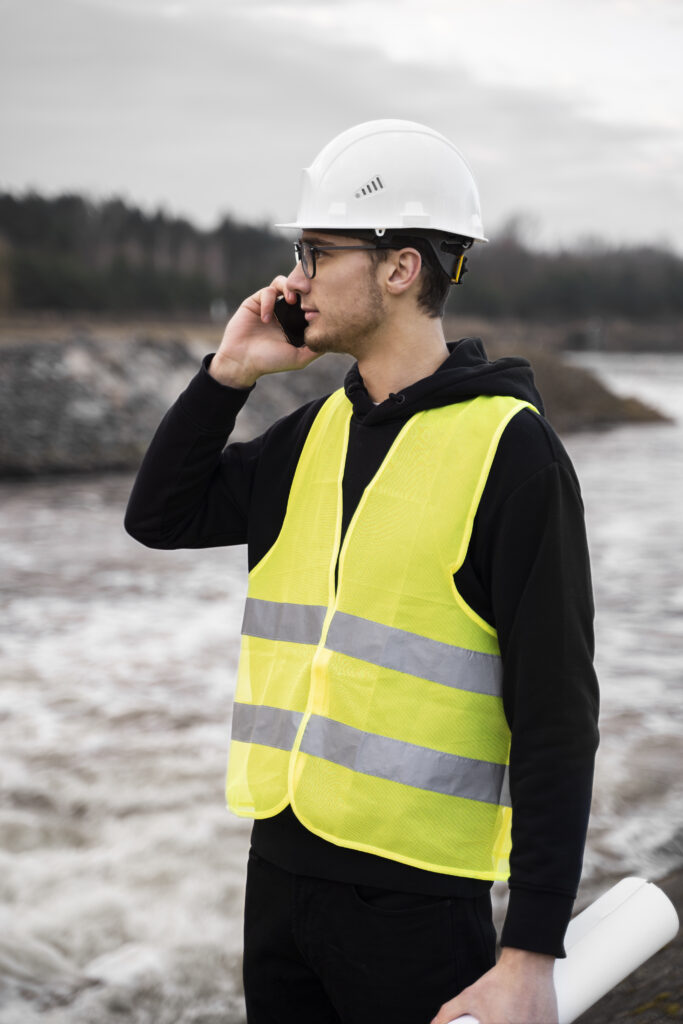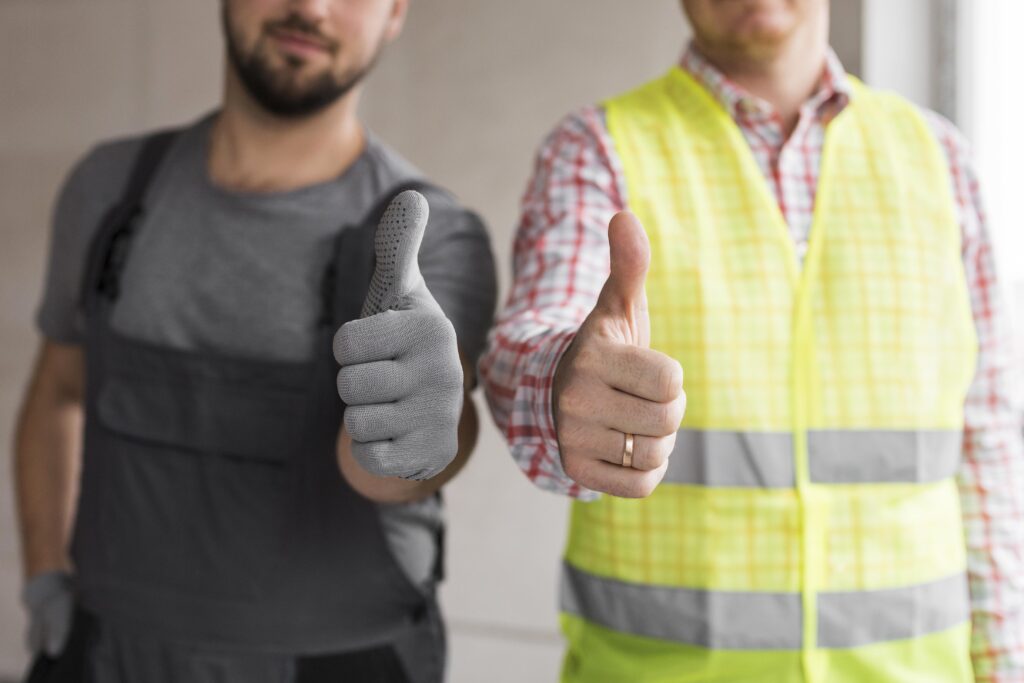In any workplace, safety gear is crucial for protecting employees from potential hazards. One of the most essential pieces of safety equipment is the reflective safety vest. These vests play a critical role in ensuring that workers remain visible in various environments, whether it’s on a construction site, in a warehouse, or along a busy highway.
Safety vest with reflective stripe in Malaysia come in different classes and styles, each suited for specific tasks and conditions. This article will guide you through the process of choosing the right vest for your work environment, helping you make an informed decision to enhance safety and compliance.
Why Reflective Safety Vests Are Essential
Visibility
One of the primary purposes of reflective safety vests is to enhance worker visibility, particularly in low-light conditions or high-traffic areas. When light hits the reflective strips, the vest lights up, making it easier for others—whether drivers or fellow workers—to see the person wearing it. This visibility is crucial for preventing accidents.
Compliance
In many industries, reflective vests are not just a recommendation—they’re a legal requirement. Organizations such as OSHA (Occupational Safety and Health Administration) and ANSI (American National Standards Institute) have strict regulations that mandate the use of reflective vests in specific work environments. Ensuring compliance with these standards helps businesses avoid penalties while keeping workers safe.
Protection
By making workers more visible, reflective vests significantly reduce the risk of accidents. Whether it’s preventing a construction worker from being struck by moving equipment or helping roadside workers stay visible to oncoming vehicles, these vests provide an added layer of protection that could save lives.

Types of Reflective Safety Vests
Class 1 Vests
Class 1 vests are designed for low-risk environments where traffic is minimal or slow-moving. They are typically used by parking attendants, warehouse workers, and others who need basic visibility in controlled workspaces. The vest has a minimal amount of reflective striping, sufficient for environments where high visibility is less critical.
Class 2 Vests
Class 2 vests are for medium-risk environments, such as construction sites or roadwork, where traffic moves at moderate speeds, and workers are closer to vehicles. These vests have more reflective material than Class 1 vests, offering better visibility in a wider range of conditions.
Class 3 Vests
Class 3 vests offer the highest level of visibility and are used in high-risk environments. These include emergency responders, utility workers, and roadside employees working near fast-moving traffic or hazardous areas. Class 3 vests cover more of the body with reflective material, providing maximum visibility to ensure safety in dangerous settings.
Key Factors to Consider When Choosing a Vest
Work Environment
The type of work environment plays a significant role in determining which safety vest is appropriate. Indoor workers may need lighter, breathable materials, while outdoor workers in high-traffic areas require a vest with more reflective striping for increased visibility.
Weather Conditions
Consider the climate when choosing a vest. In hot environments, breathable mesh materials can help workers stay cool, while waterproof fabrics are essential in rainy or wet conditions. For colder climates, consider a vest that can be layered over heavy clothing without restricting movement.
Comfort and Fit
An improperly fitted vest can restrict movement and cause discomfort, which may reduce a worker’s effectiveness. Ensure the vest is the right size and allows for ease of movement. Adjustable straps or zippers can help achieve the right fit.
Durability and Material Quality
Reflective vests are often exposed to harsh environments, so it’s crucial to choose one made from durable, high-quality materials. The reflective strips should be firmly attached and resistant to wear and tear. Look for vests that are designed to withstand repeated washing and daily use without losing their reflectivity.
Additional Features
Some safety vests come with extra features such as pockets, radio clips, and tear-away designs for increased functionality. These features can be particularly useful in industries like construction or emergency services, where workers need to carry tools or equipment while maintaining visibility.
Industry-Specific Recommendations
Construction Sites
For construction workers, a Class 2 or Class 3 vest is recommended, depending on the proximity to moving vehicles and machinery. A durable fabric with features such as tool pockets and tear-away options can increase both safety and efficiency.
Roadside and Traffic Work
High-visibility Class 3 vests are essential for roadside workers, especially those working at night. Reflective strips on the front, back, and sides ensure 360-degree visibility, which is critical when working near fast-moving traffic.
Warehouse and Indoor Work
In warehouse or indoor environments, where the risk of vehicle accidents is lower, Class 1 vests may suffice. Brightly colored, non-reflective options may also be appropriate for workers who need to be seen but do not require extreme visibility.
Utility and Electrical Workers
Utility workers and electricians should consider flame-resistant reflective vests, which provide visibility while also offering protection against sparks and electrical hazards. These specialized vests are designed to meet the safety needs of workers exposed to potentially dangerous environments.
Reflective Vest Compliance and Certification
ANSI/ISEA Standards
When choosing a safety vest, it’s important to ensure it complies with ANSI/ISEA standards. These standards outline the amount of reflective material, placement, and design of vests to meet specific safety requirements for different work environments.
Workplace Safety Regulations
Make sure your safety vest with reflective stripe in Malaysia meets local and international workplace safety regulations. These certifications guarantee that the vest has been tested and approved for use in the specific conditions of your work environment.
Maintenance and Replacement of Safety Vests
Inspecting for Wear and Tear
Regularly inspect your safety vest for signs of wear, such as fraying, tearing, or fading reflective strips. Even minor damage can compromise the vest’s visibility, so timely inspection is crucial.
Cleaning and Maintenance
To extend the lifespan of your reflective vest, follow the manufacturer’s instructions for cleaning. Use mild detergents and avoid bleach, which can degrade the reflective material. Store your vest in a cool, dry place away from direct sunlight, as excessive exposure to UV rays can cause fading.
When to Replace Your Vest
A vest should be replaced immediately if the reflective strips are significantly damaged or the material has become compromised. Even with proper care, vests wear out over time, and it’s essential to prioritize safety by replacing them when necessary.
Conclusion
Choosing the right reflective safety vest is about more than just complying with regulations—it’s about protecting workers and ensuring their visibility in various environments. By considering factors such as the work environment, weather conditions, fit, and durability, you can find the ideal vest that provides both safety and comfort. Always ensure your vest meets industry standards and replace it when it no longer serves its purpose effectively. Your safety and that of your team should always come first.
